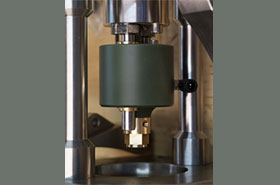Enwesa (ENSA) develops new spark erosion techniques
11 January 2016 |

ENWESA, a company belonging to ENSA, works daily on developing its own technology, which can be applied to the services which it carries out at different manufacturing facilities. Among its improvement projects it is currently developing a new system which allows the use of electrical discharge machining (EDM), also known as spark erosion, into the nuclear environment.
Specifically, this project has been awarded a grant within the framework of the INNOVA 2015 program from the Government of Cantabria. The aim of this line of grants promoted by the Department for Innovation, Industry, Tourism and Trade of the regional Government is backing up new industrial and/or experimental development research projects, whose final goal is to obtain new products, procedures and/or services which can become a corporate reality.
Electrical Discharge Machining in the nuclear industry
During more than ten years ENWESA has been developing spark erosion technology applied to the nuclear industry. In particular, to the maintenance of the main components in light-water nuclear power plants, when such maintenance involves the cutting or drilling of metallic materials, normally of austenitic steels.
Although nowadays it is a mature industry, the approach taken by the projects does not envisage the industrial research on this procedure, nor its application to the environment of the nuclear industry.
The interest in using the electrical discharge machining versus the conventional mechanical methods lays on two factors which appear frequently in nuclear maintenance:
- Underwater activities at depths of up to 10 meters.
- Very demanding requirements for the exclusion of materials, which rule out any method which might result in the apparition of particles or of shavings. These products generate an unacceptable risk when they get into the reactor’s cooling circuit, as they can impact on different components, damaging them, especially the cladding of the fuel items and the piping of the steam generators.The technology developed by ENWESA has been successfully used in a number of European nuclear power plants, and it is envisaged that it will be more used in a few years in connection with repair works, in which ENWESA is the industry’s leading company.
ENSA and Grupo SEPI
ENSA belongs to Grupo SEPI, a corporate holding which includes a total of 16 state-owned companies in which it has direct, majority shareholding participations, with a final workforce of around 73,000 professionals in 2014; the Spanish state-owned television and radio corporation, Corporación Radiotelevisión Española, which is attached to SEPI, and one public foundation. Equally, SEPI has direct minority shareholdings in a further ten companies, and indirect shareholdings in more than one hundred companies.







